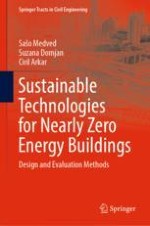This book presents cutting-edge work on the energy efficiency and environmental sustainability of buildings, examining EU policies, regulations and technologies for complex systems such as passive buildings, sustainable buildings and, as part of the Energy Performance of Building Directive (EPBD), nearly Zero Energy Buildings (nZEB) requirements. It explores a wide range of topics, including indoor environment requirements, building physics, in-situ experiments to determine the thermal properties of buildings, nZEB requirements, building service technology, and methods of evaluating energy efficiency and environmental impacts. It also provides an overview of the best available technologies for nZEB, including those for the rational use of energy, utilization of renewable energy sources, EPBD systems and calculation methods. This book is a valuable resource for students, researchers and practitioners of urban planning, and architecture, civil and mechanical engineering.
